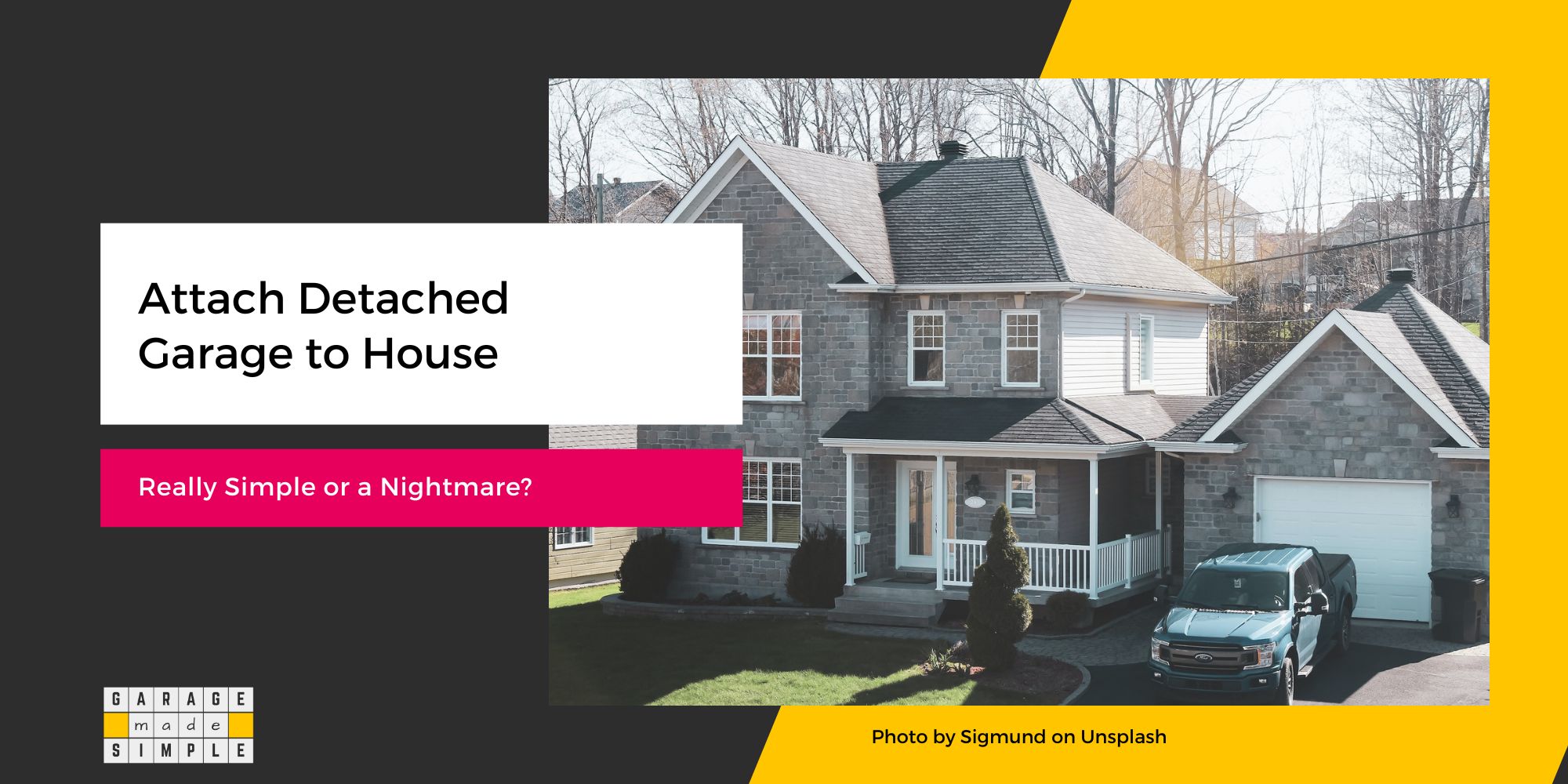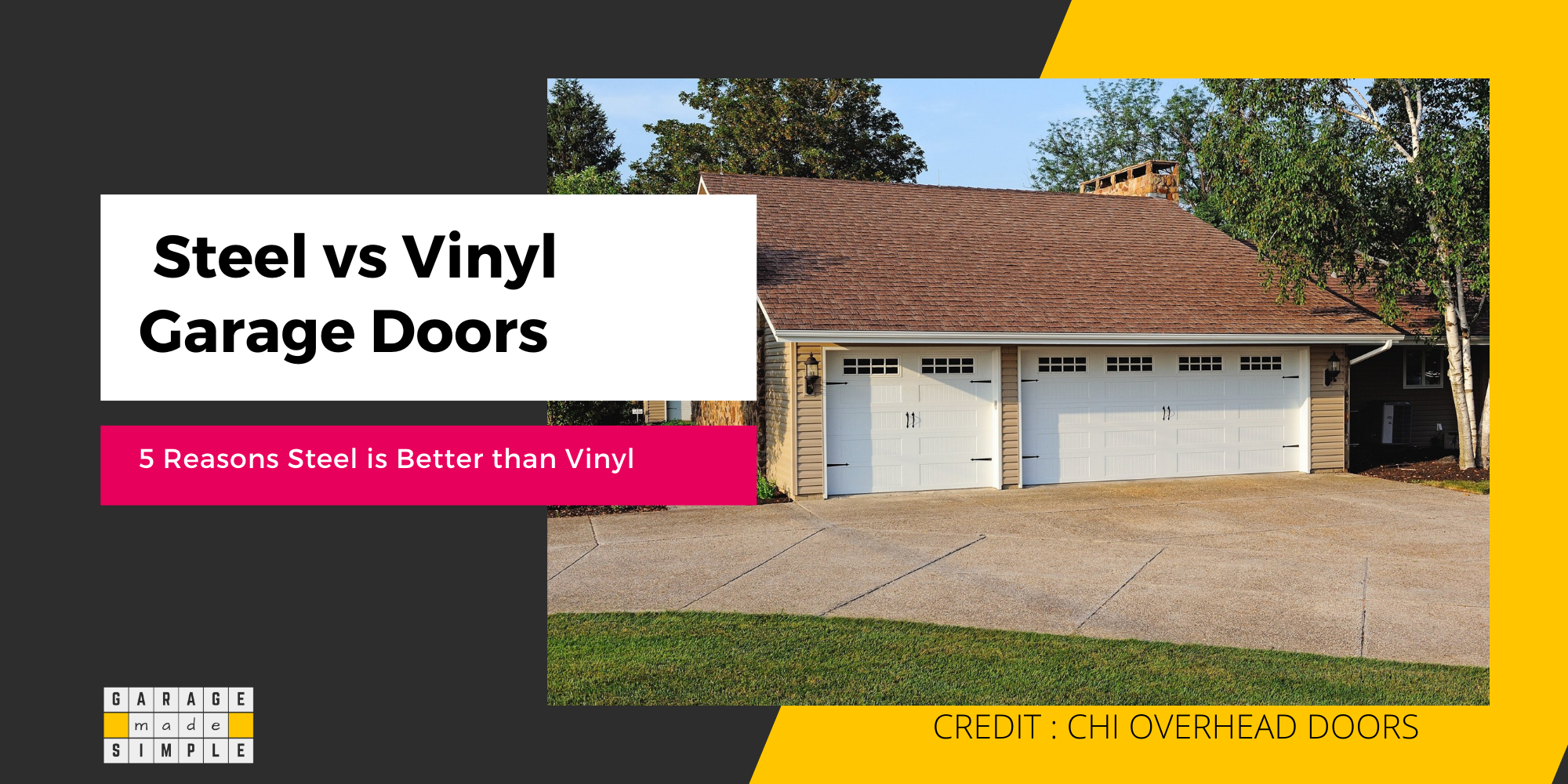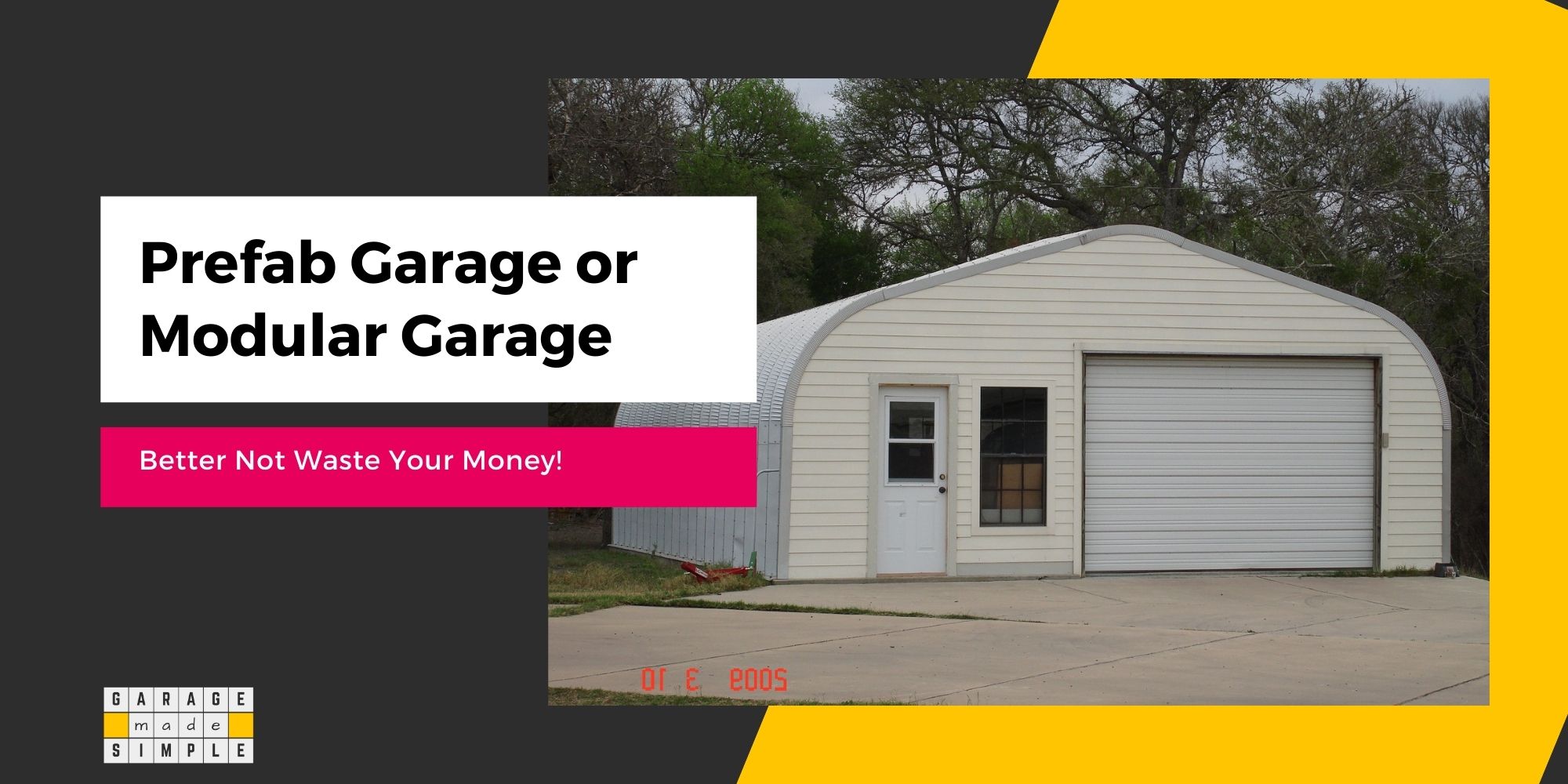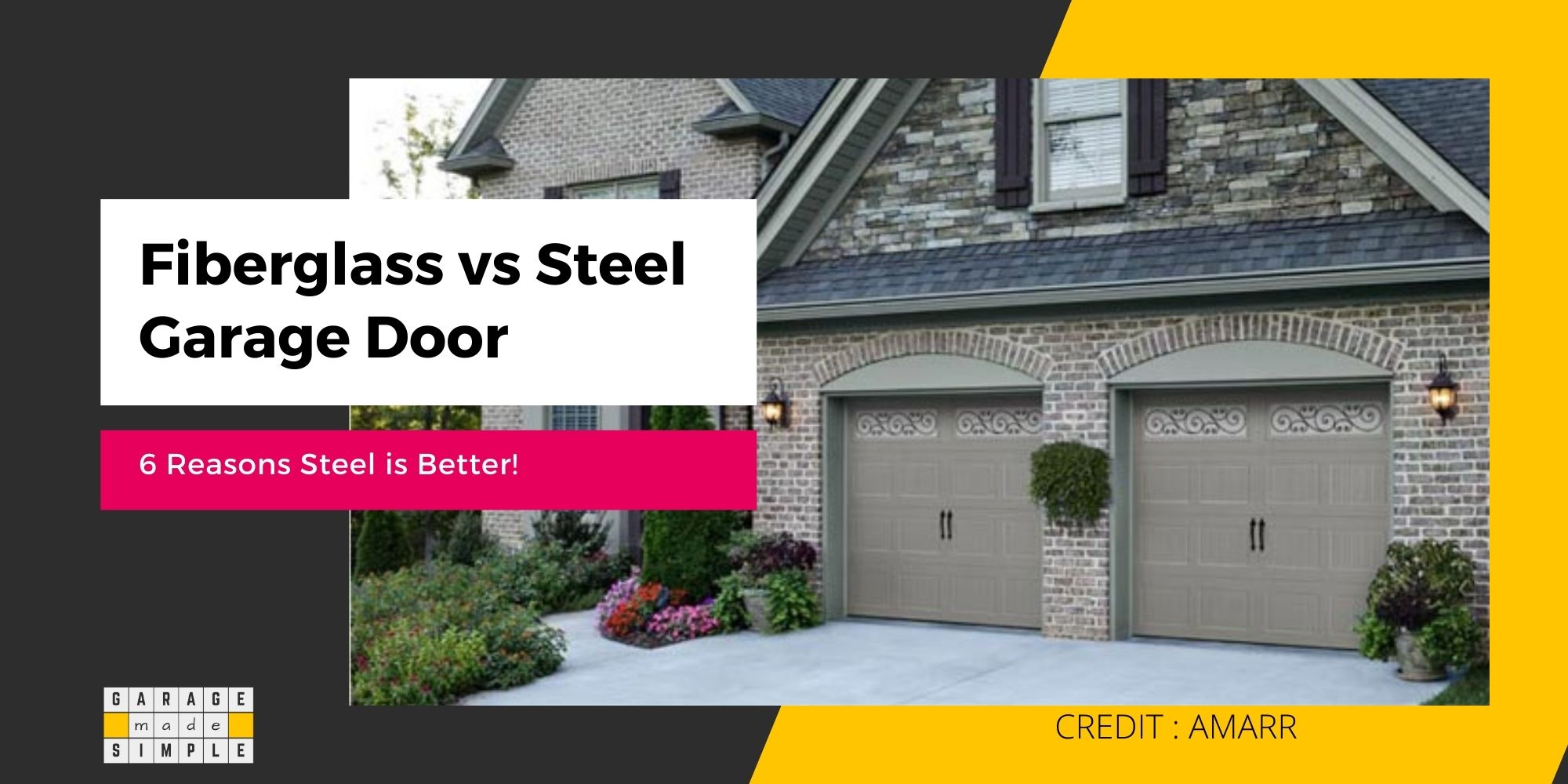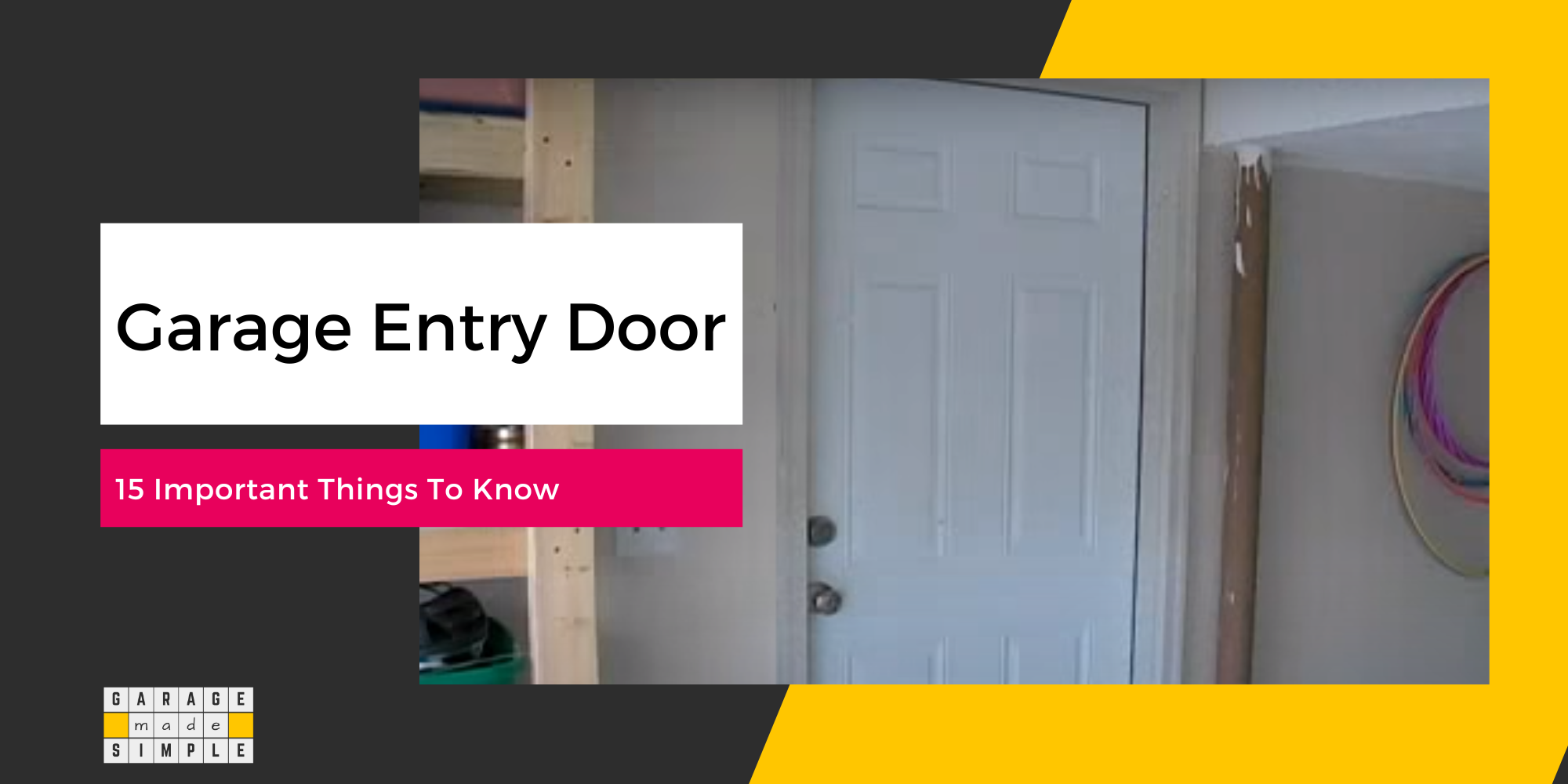Garage Side Door Swing: Safety & Convenience
garagemadesimple.com is a participant in the Amazon Services LLC Associates Program, an affiliate advertising program designed to provide a means for sites to earn advertising fees by advertising and linking to Amazon.com . The website is also an affiliate of a few other brands.
Should a Garage Side Door Swing In Or Out?
You may decide to have a side door when building a new garage or remodeling an existing one. Great idea! But, should the garage side door swing in or out?
While there is no IRC code, a garage side door should swing out. A garage side door that swings out makes it easier to exit the garage in an emergency, such as a fire. Make your garage side door swing out to increase your and your family’s safety.
Here are the key benefits of having a garage side door swing out:
- Safety: In an emergency, such as a fire, it is easier to exit the garage if the door swings out. This is because you can push the door open with your body weight, even if your hands are full or you are carrying something or somebody. While important for detached garages, this arrangement is even more critical in the case of an attached garage.
- Security: Garage side doors that swing out are more difficult for burglars to break into. This is because the hinges are on the inside of the garage, where they cannot be easily accessed.
- Convenience: Garage side doors that swing out are more convenient to use, especially if you are carrying something in or out of the garage. You do not have to step aside to open the door, and you do not have to worry about the door swinging shut behind you.
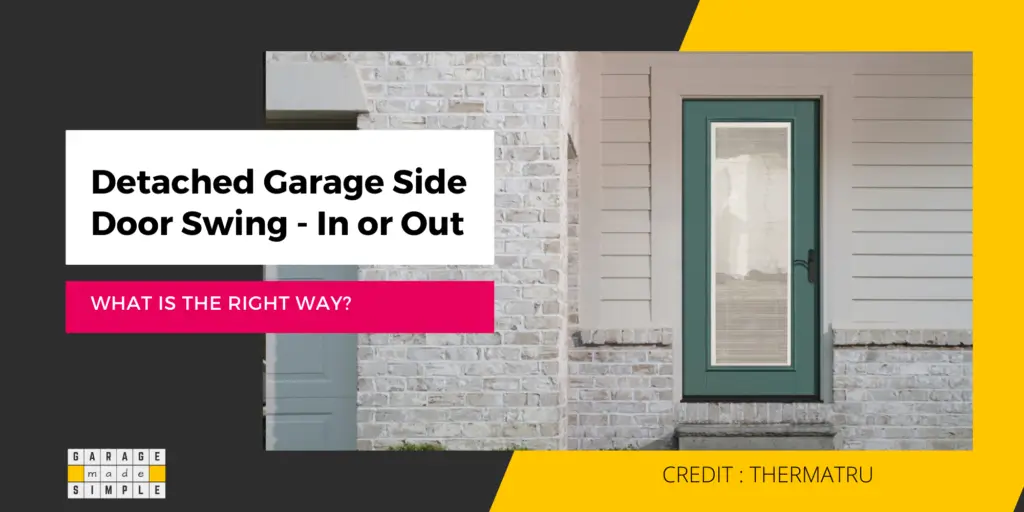
However, there are a few things to keep in mind when deciding to have the garage side door swing out:
- Space: Make sure you have enough space in front of the door for it to swing open fully.
- Obstructions: Avoid installing a garage side doors that swing out in a location where it will obstruct traffic or people walking by.
- Wind: If you live in an area with strong winds, you may want to consider installing a storm door or a windbreak to protect your door.
A garage side door should swing out of the garage to the outdoors, unlike the garage entry door to the house. This arrangement is safer, as it is easier to get out of the garage, in case of an emergency.
Actually, you may have already noticed that the emergency exit doors of a warehouse or a large big box retailer, always open out. This arrangement makes it easier to exit the premises in case of fire or any other catastrophe. At the same time, burglars or intruders can not get in.
However, do keep in mind that local building authorities may have a code for garage side door swing. If so, then of course, you have to abide by it.
Use a Schlage Accent Door Lever, Keyed Entry Lock with a garage side door swings out for high level of safety and security.
Schlage Accent Door Lever, Keyed Entry Lock
Keyed entry function is perfect for use on entry doors where keyed security is needed; unlocks from the inside when the door handle is rotated, allowing you to leave quickly and re-enter easily from the outside; includes lockset and 2 keys
A garage is considered as a high fire risk zone. There is a lot of flammable stuff in the garage such as gas, oil, lawn care products and paints.
Storage can get cluttered, as often garages are used to store anything and everything, for which there is not enough space in the house. If you use your garage as a workshop for your DIY projects, then another level of clutter is added.
According to a 2017-2019 report by the US Fire Administration, 6.1% of all non confined fires in 1-2 family homes started in the garage. In 17% of cases the cause was an electrical malfunction. Not surprising as garage electrical systems are often overloaded and poorly maintained.
So installing a garage side door that swings out adds a level of safety to your garage!
What Is A Garage Side Door Called?
What is a garage side door called? That’s a trick question, is it not? But to be fair the question does require some serious consideration and a definitive answer.
The terminology for the various doors in a garage can be a bit vague, at times.
So, the term “garage door”, almost always refers to the big door in the garage through which your car can enter or leave the garage. Some people may choose to make their meaning clearer, by referring to it as the “main garage door”. Obviously the “garage door” is large enough to accommodate at least one vehicle.
In addition to a “garage door”, an attached garage often has an “entry door” or an “entry door to the house”. The “entry door” is there to let you enter your house directly from within the garage and exit to the garage directly from the house.
An “entry door” is man sized and serves two important functions:
- You do not need to open the “garage door”, if you do not intend to move your cars out.
- You do not need to brave the elements, just to get into your house, after parking your car in the garage.
Further, in addition to a “garage door” and an “entry door”, you may choose to have another man sized door on one of the garage side walls not attached to the house. This is called a “side door” and lets you enter your garage from the yard or driveway without the need to open the “garage door”.
The “side door” is sometimes called a “personnel door” or a “man door”, but usually in the context of a commercial garage or parking area.
Is There A Code for Side Door to Garage?
The 2018 International Residential Code (IRC) does not have any specific code for the side door to a garage. The 2018 IRC does have a very specific code for “entry door” regarding fire rating. The code is covered in Section R302.5.1 of the 2018 edition of the International Residential Code (IRC) and is as under.
R302.5.1 Opening protection: Openings from a private garage directly into a room used for sleeping shall not be permitted. Other openings between the garage and the residence shall be equipped with solid wood doors not less than 1-3/8 inches (35 mm) in thickness, solid or honey-comb core steel doors not less than 1-3/8 inches (35 mm) thick, or 20 minute fire-rated doors equipped with a self-closing or automatic-closing device.
This code mentions the type of door material and the closing mechanism but does not specify the way the “entry door” must swing. Obviously, the code has no mention of the way a garage “side door” must swing
The Section 609 of 2018 IRC covers the code for exterior windows and doors for residences. The garage “side door” would need to conform to this section. The section does cover issues like wind borne debris protection, but is silent on which way the door should swing.
Having said that, the Local Building Code authorities may have their own interpretation of the IRC or their own ideas of the way a garage “side door” ought to swing.
So please check & abide by the local building code, if any regarding garage “side door” swing.
Why Do Front Doors in Florida Open Outwards?
The answer to this question corroborates my statement that garage side doors must swing out.
Florida has the most stringent building codes because it is constantly being hit by severe hurricanes. The external doors, especially in Southern Florida, must open outwards, as per the local building code.
An outward opening side door provides your garage with an added layer of protection. An outward opening door can withstand the wind load from a 140 mph hurricane a lot better. In contrast, an inward swinging door only has a latch and a deadbolt to prevent it from being blown into your garage.
If it works in hurricane prone Florida it should work anywhere.
Thank you very much for reading the post. I do hope you found it informative and useful.


